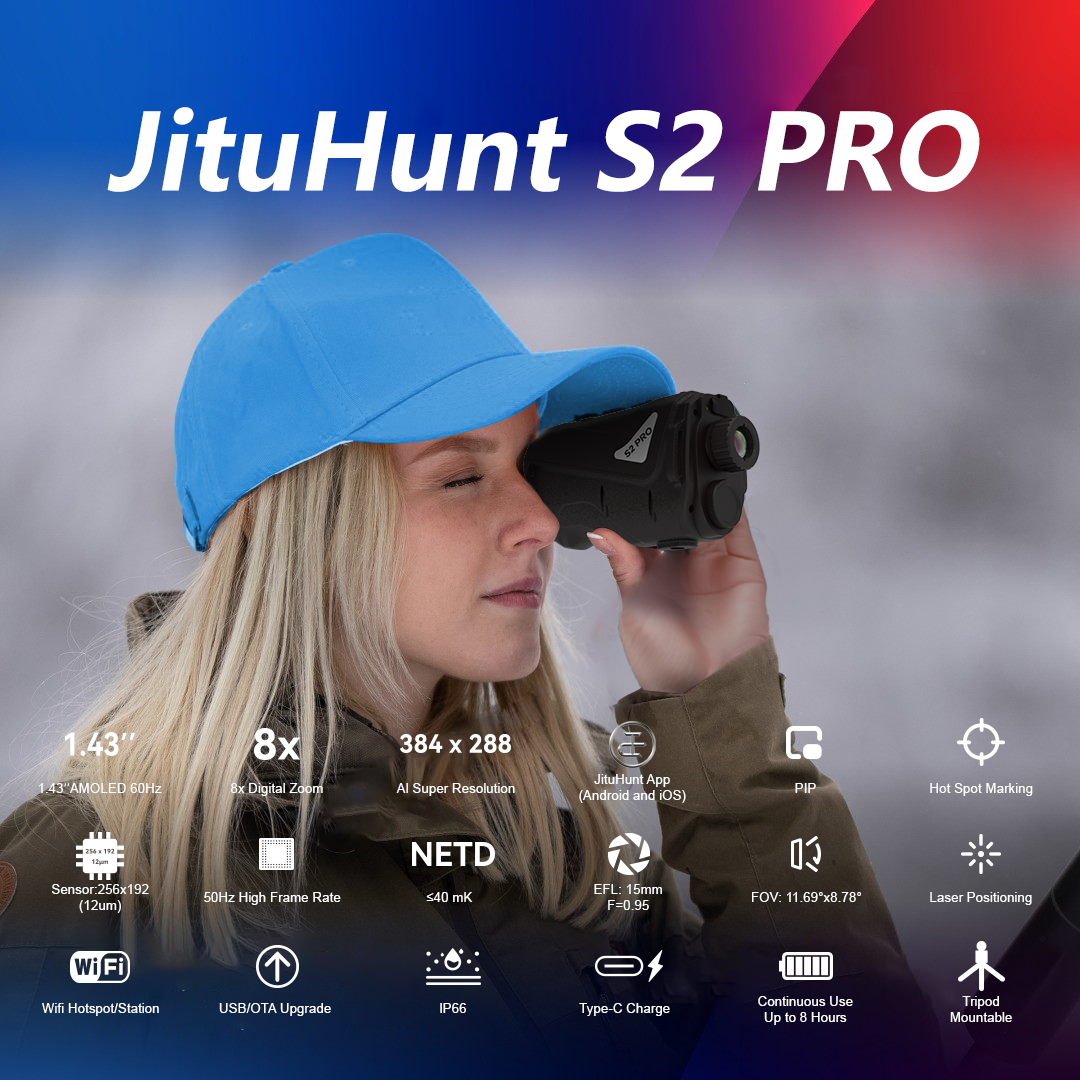
Jituhunt Thermal monocular S2Pro's AI super-resolution technology
Share
Jituhunt Thermal monocular S2Pro's AI super-resolution technology is an image enhancement technology applied to thermal imaging monocular equipment, which aims to improve the resolution and clarity of thermal imaging images. Its principles and advantages are as follows:
Technical principle: usually based on deep learning neural networks. By learning and training a large number of low-resolution thermal imaging images and corresponding high-resolution images, the model can master the mapping relationship between low-resolution images and high-resolution images. In practical applications, the low-resolution thermal imaging images collected by S2Pro are input into the trained AI model, and the model uses the learned knowledge to process the image, and predicts and generates the missing detail information through the algorithm, thereby upgrading it to a high-resolution thermal imaging image.
Technical advantages
Improve image quality: enable the thermal imaging monocular to present a clearer and more detailed target image during observation, allowing users to more accurately identify and analyze the target's detailed features, contours and other information. For example, in a dark environment or when observing from a long distance, it helps to see the shape and structure of the object more clearly, and discover some subtle details, such as the hair texture of animals and the tiny logo of objects.
Enhanced target recognition capability: High-resolution images help improve the accuracy of identifying different targets, whether it is identifying intruders or objects in security monitoring, or identifying terrain, animals, etc. in outdoor adventures, it can enable users to make judgments more quickly and accurately, reducing the possibility of misjudgment and missed judgments.
Adapt to a variety of scenarios: Whether in military reconnaissance, security monitoring, outdoor adventures, industrial testing and other fields, this technology can play a role, helping users to obtain better thermal imaging visual effects in various complex environments and conditions, and improve the applicability and practicality of the equipment. For example, in industrial testing, abnormal heating parts of the equipment can be more clearly found, which helps to troubleshoot faults in a timely manner.
